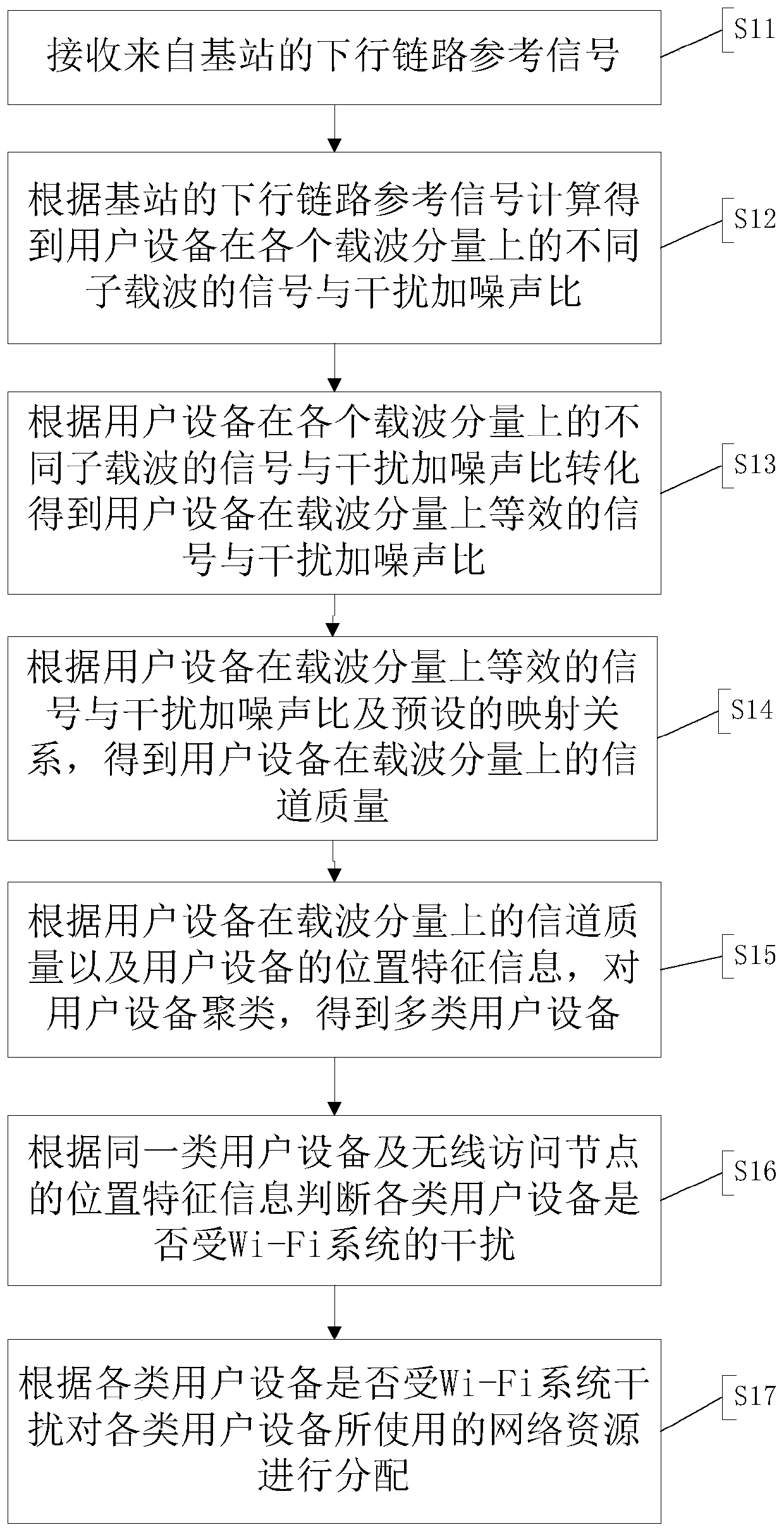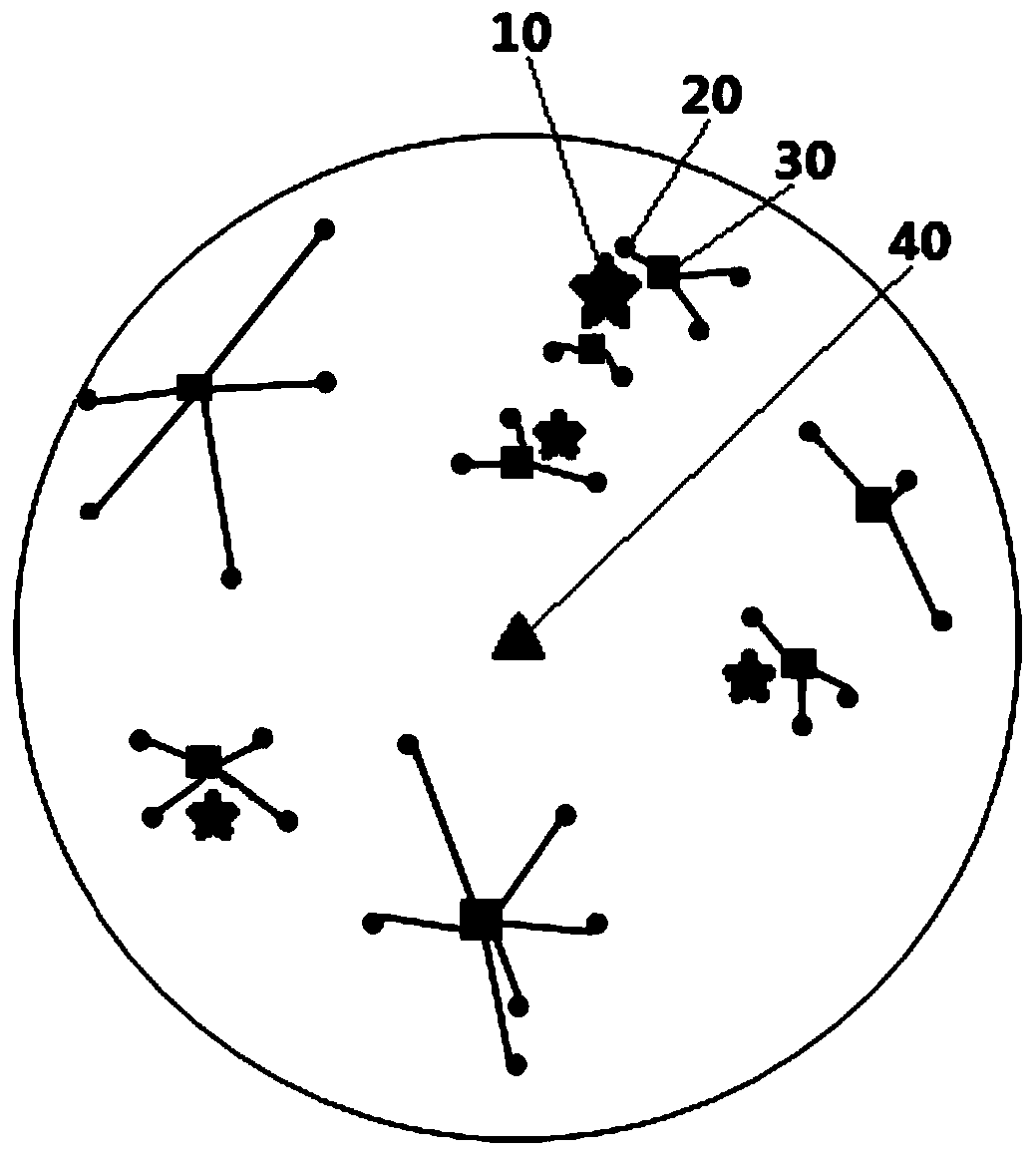Network resource allocation method and device
A carrier component and user equipment technology, applied in wireless communication, electrical components, etc., can solve problems such as conflicts and affecting network resource allocation
- Summary
- Abstract
- Description
- Claims
- Application Information
AI Technical Summary
Problems solved by technology
Method used
Image
Examples
Embodiment 1
[0094]The embodiment of the present invention provides a method for allocating network resources, which can be applied to wireless communication networks. Due to the shortage of resources caused by the rapid increase in the number of mobile devices and applications, new resources need to be developed, and network resources need to be re-allocated. In a specific application scenario, the network resource allocation method in this embodiment, such as figure 2 shown, including:
[0095] Step S11: Receive a downlink reference signal from a base station. In this embodiment, the base station (BaseStation, BS) is an indispensable part of the LTE-U system, and the base station is a public mobile communication base station, which is a form of radio station, and refers to a certain radio coverage area. The mobile communication switching center is a radio transceiver station that transmits information between the user equipment; the base station communicates with the user equipment thr...
Embodiment 2
[0192] The embodiment of the present invention provides a device for allocating network resources, which can be applied to wireless communication networks. Due to the shortage of resources caused by the rapid increase in the number of mobile devices and applications, new resources need to be developed, and network resources need to be re-allocated. In specific application scenarios, such as Figure 6 As shown, the device includes:
[0193] The receiving module 41 is configured to receive the downlink reference signal from the base station. For detailed implementation content, please refer to the relevant description of step S11 in the above method embodiment.
[0194] The calculation module 42 is configured to calculate the signal-to-interference-plus-noise ratio of different subcarriers of the user equipment on each carrier component according to the downlink reference signal of the base station. For detailed implementation content, please refer to the relevant description of...
Embodiment 3
[0202] An embodiment of the present invention also provides a non-transitory computer-readable medium, the non-transitory computer-readable storage medium stores computer instructions, and the computer instructions are used to make the computer execute the method for allocating network resources as described in any one of the above-mentioned embodiments , wherein the storage medium can be a magnetic disk, an optical disk, a read-only memory (Read-Only Memory, ROM), a random access memory (Random Access Memory, RAM), a flash memory (Flash Memory), a hard disk (Hard DiskDrive , abbreviation: HDD) or a solid-state drive (Solid-State Drive, SSD), etc.; the storage medium may also include a combination of the above-mentioned types of memories.
PUM
 Login to View More
Login to View More Abstract
Description
Claims
Application Information
 Login to View More
Login to View More - R&D
- Intellectual Property
- Life Sciences
- Materials
- Tech Scout
- Unparalleled Data Quality
- Higher Quality Content
- 60% Fewer Hallucinations
Browse by: Latest US Patents, China's latest patents, Technical Efficacy Thesaurus, Application Domain, Technology Topic, Popular Technical Reports.
© 2025 PatSnap. All rights reserved.Legal|Privacy policy|Modern Slavery Act Transparency Statement|Sitemap|About US| Contact US: help@patsnap.com



